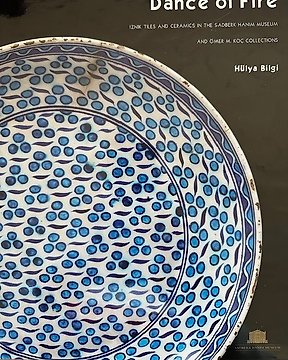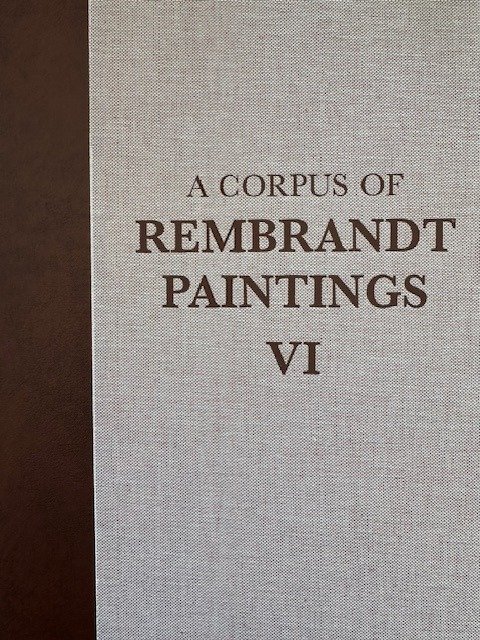
Hulya Bilgi - Dance of Fire, Iznik Tiles and Ceramics in the Sadberk Hanim Museum And Omer M.Koc Collections - 2009
Nr 83948265

Nr 83948265

A Corpus of Rembrandt Paintings VI: Rembrandt’s Paintings Revisited A Complete Survey, Ernst Van De Wetering, Hardcover, Springer, 2014
This concluding sixth volume of A Corpus of Rembrandt Paintings presents a revised, chronologically ordered survey of Rembrandt’s entire oeuvre of 336 paintings. A considerable number of these paintings are reattributed to Rembrandt by the author after they were rejected by connoisseurs in the 1960s and subsequently. The book includes extensive commentaries on the re-attributed works and many of Rembrandt’s other paintings. Provides a multi-facetted new insight into Rembrandt’s world and in the fields of Rembrandt connoisseurship and research.
Contains 430 color plates (including 77 enlarged details) and c. 750 additional illustrations, and figures mostly in colour. This work of art history and art research belongs in the library of every serious art historical institute, university or museum.
A revised survey of Rembrandt’s complete painted oeuvre. The question of which 17th-century paintings in Rembrandt’s style were actually painted by Rembrandt himself had already become an issue during his lifetime. It is an issue that is still hotly disputed among art historians today. The problem arose because Rembrandt had numerous pupils who learned the art of painting by imitating their master or by assisting him with his work as a portrait painter. He also left pieces unfinished, to be completed by others. The question is how to determine which works were from Rembrandt’s own hand. Can we, for example, define the criteria of quality that would allow us to distinguish the master’s work from that of his followers? Do we yet have methods of investigation that would deliver objective evidence of authenticity? To what extent do research techniques used in the physical sciences help? Or are we, after all, still dependent on the subjective, expert eye of the connoisseur? The book provides answers to these questions.
Prof. Ernst van de Wetering, the author of our book which deals with these questions, has been closely involved in all aspects of this research since 1968, the year the renowned Rembrandt Research Project (RRP) was founded. In particular, he played an important role in developing new criteria for authentication. Van de Wetering was also witness to the way the often overly zealous tendency to doubt the authenticity of Rembrandt’s paintings got out of hand. In this book he re-attributes to the master a substantial number of unjustly rejected Rembrandts. He also was closely involved in the (re)discovery of a considerable number of lost or completely unknown works by Rembrandt.
The verdicts of earlier specialists – including the majority of members of the original RRP (up to 1989) – were based on connoisseurship: the self-confidence in one’s ability to recognise a specific artist’s style and ‘hand’. Over the years, Van de Wetering has carried out seminal research into 17th-century studio practice and ideas about art current in Rembrandt’s time. In this book he demonstrates the fallibility of traditional connoisseurship, especially in the case of Rembrandt, who was par excellence a searching artist.The methodological implications of this critical view are discussed in an introductory chapter which relates the history of the developments in this turbulent field of research. Van de Wetering’s account of his own involvement in it makes this book a lively and sometimes unexpectedly personal account.
The catalogue section presents a chronologically ordered survey of Rembrandt’s entire painted oeuvre of 336 paintings, richly illustrated and annotated. For all the paintings re-attributed in this book, extensive commentaries have been included that provide a multi-facetted new insight into Rembrandt’s world and the world of art-historical research.
Rembrandt’s Paintings Revisited is the concluding sixth volume of A Corpus of Rembrandt Paintings (Volumes I-V; 1982, 1986, 1989, 2005, 2010). It can also be read as a revisionary critique of the first three Volumes published by the old RRP team up till 1989 and of Gerson’s influential survey of Rembrandt’s painted oeuvre of 1968/69. At the same time, the book is designed as an independent overview that can be used on the basis that anyone seeking more detailed information will be referred to the five previous (digital versions of the) Volumes and the detailed catalogues published in the meantime by the various museums with collections of Rembrandt paintings.
Product details
Publisher : Springer
Language : English
Hardcover : 735 pages
ISBN-13 : 978-9401791731
Dimensions : 34x 25 cm
Jak kupować w serwisie Catawiki
1. Odkryj coś wyjątkowego
2. Złóż najwyższą ofertę
3. Dokonaj bezpiecznej płatności